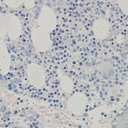The pollination of a self-incompatible, food-mimic orchid, Coelogyne fimbriata (Orchidaceae), by female Vespula wasps.
الكلمات الدالة
نبذة مختصرة
OBJECTIVE
The study of specialized interactions between species is crucial to our understanding of processes in evolutionary ecology due to their profound effect on life cycles and diversification. Obligate pollination by a single wasp species is rare in Orchidaceae except in species with sexually deceptive flowers that are pollinated exclusively by male insects. The object of this study was to document pollination of the food-deceptive flowers of Coelogyne fimbriata, a species pollinated exclusively by female wasps.
METHODS
Field observations and experiments were conducted in two populations of C. fimbriata. Floral phenology was recorded, and functional floral architecture was measured. Insect visitors to flowers were observed from 2005 to 2007. Bioassay experiments were conducted to check whether the floral odour attracted pollinators. Natural (insect-mediated) rates of pollinarium removal, pollinium deposition on stigmas, and fruit set were recorded. To determine the importance of cross-pollination, the breeding system was assessed via controlled, hand-pollination experiments.
RESULTS
Two populations of C. fimbriata with fragrant, nectarless flowers are pollinated by females of the same Vespula species (Vespidae, Hymenoptera). Experiments on wasps show that they crawl towards the source of the odour. The flowering period appears to coincide with an annual peak in Vespula colony expansion when additional workers forage for carbohydrates. Rates of pollinarium removal (0.069-0.918) and pollinium deposition on stigmas (0.025-0.695) are extremely variable. However, fruit set in C. fimbriata is always low (0.014-0.069) and appears to be based on self-incompatibility coupled with intraclonal (geitonogamous) deposition of pollinia.
CONCLUSIONS
Coelogyne fimbriata and Steveniella satyrioides are now the only orchid species known to have food-deceptive flowers that are pollinated exclusively by eusocial, worker wasps. In C. fimbriata, floral odour appears to be the major attractant. Sub-populations may go through flowering seasons when pollinators are abundant or infrequent, but fruit set always remains low because the obligate pollinator does not often appear to transfer pollinaria between intercompatible genets.



